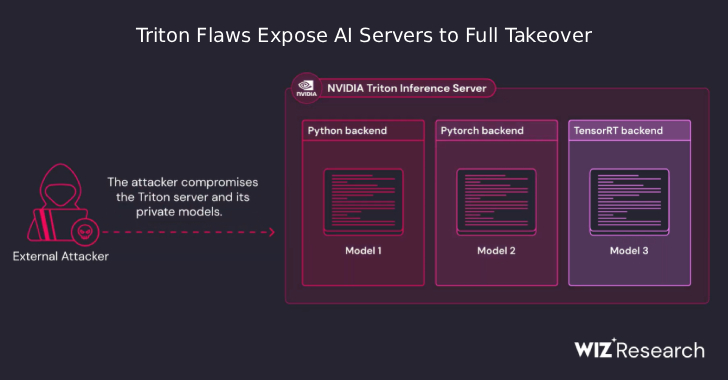
Rise of the Cloud: Advanced Techniques in Cloud Security Testing
In an era dominated by digital transformation, cloud computing has emerged as the backbone of modern business operations. The convenience, scalability, and cost-effectiveness of cloud services have made them an integral part of organizations across the globe. However, as more sensitive data and critical applications move to the cloud, security concerns have taken center stage. To counter these threats, advanced techniques in cloud security testing have evolved to safeguard the digital realm.
The Cloud Security Challenge
Cloud computing has revolutionized the way we store, process, and access data. Whether you’re streaming your favorite show on Netflix or running a global e-commerce platform, chances are you’re relying on cloud services. This omnipresence has made cloud environments prime targets for cyberattacks.
The Scale of the Challenge: One of the defining features of cloud computing is its scalability. Cloud providers offer services that can expand or contract according to the user’s needs, making it challenging to predict and protect against potential vulnerabilities. Traditional security measures are often insufficient in this dynamic environment.
Data Privacy: With stringent data protection regulations like GDPR (General Data Protection Regulation) and CCPA (California Consumer Privacy Act) in place, organizations must ensure the privacy and integrity of user data. Any breach could result in massive fines and a tarnished reputation.
Sophisticated Threats: Cybercriminals are continually developing new techniques to breach cloud security. From sophisticated phishing attacks to ransomware, the threat landscape is ever-evolving.
The Evolution of Cloud Security Testing
To address these challenges, the field of cloud security testing has seen significant advancements. These techniques are designed to identify vulnerabilities, assess risks, and fortify cloud environments against potential threats.
- Automated Security Scanning:
Automated security scanning tools are at the forefront of cloud security testing. They continuously scan cloud environments for vulnerabilities and misconfigurations. These tools can detect issues ranging from weak access controls to unpatched software, helping organizations rectify problems before attackers can exploit them.
One example of such a tool is AWS Inspector, which scans Amazon Web Services (AWS) environments for security vulnerabilities. Similarly, Microsoft Azure provides Azure Security Center, which offers robust security recommendations and threat protection for Azure resources.
- Penetration Testing in the Cloud:
Penetration testing, also known as ethical hacking, is an essential technique in cloud security testing. It involves authorized experts attempting to exploit vulnerabilities in the cloud infrastructure, applications, or services. The goal is to identify weaknesses that could be exploited by malicious hackers.
Cloud providers often offer penetration testing services as well. For instance, AWS has a program called AWS Penetration Testing, which enables customers to assess the security of their AWS environments safely.
- Cloud-Native Security Solutions:
Cloud-native security solutions are designed to protect cloud environments from within. These solutions leverage the inherent advantages of cloud platforms to enhance security. They include services like Identity and Access Management (IAM), Security Groups, and Virtual Private Clouds (VPCs), which provide granular control over access to cloud resources.
For instance, AWS IAM allows organizations to define and manage user permissions, ensuring that only authorized personnel can access sensitive resources. Similarly, Azure’s Azure Active Directory offers identity and access management capabilities tailored for Microsoft’s cloud services.
- Threat Intelligence and Machine Learning:
Cloud security testing has also harnessed the power of threat intelligence and machine learning. By analyzing vast amounts of data, these technologies can detect unusual patterns and potential threats in real-time. This proactive approach is crucial in identifying and mitigating security risks before they escalate.
Companies like Palo Alto Networks and CrowdStrike offer cloud security solutions that leverage threat intelligence and machine learning to protect cloud environments. These solutions can automatically detect and respond to threats, reducing the burden on security teams.
- Compliance as Code:
Compliance is a significant concern in industries that handle sensitive data. Cloud security testing has embraced “Compliance as Code” to automate compliance checks. This approach allows organizations to define compliance requirements as code and automatically assess their cloud environments against these standards.
Tools like AWS Config and Azure Policy enable organizations to define and enforce compliance rules in their cloud environments. This ensures that cloud resources adhere to industry-specific regulations and security best practices.
The Future of Cloud Security Testing
As cloud technology continues to evolve, so too will the techniques for securing it. Here are some trends that are likely to shape the future of cloud security testing:
- Zero Trust Architecture:
Zero Trust Architecture (ZTA) is an emerging security model that assumes no trust, even within the network perimeter. Instead, ZTA requires continuous verification of identities and strict access control. This approach will become increasingly important in cloud security as organizations seek to protect their data and applications from both external and internal threats.
- Cloud-Native Threat Detection:
With more organizations adopting cloud-native architectures, threat detection solutions tailored for these environments will become indispensable. These solutions will be designed to detect and respond to threats specific to cloud infrastructure and services.
- DevSecOps Integration:
Integrating security into the DevOps process, known as DevSecOps, will become standard practice. This approach ensures that security measures are built into the development and deployment pipeline, rather than being a separate entity. This shift-left approach to security testing will help identify and rectify vulnerabilities earlier in the development process.
- Increased Automation:
The dynamic nature of cloud environments demands increased automation in security testing. Automated tools and workflows will become more sophisticated, allowing organizations to detect, respond to, and mitigate threats quickly and efficiently.
- Quantum Computing Security:
As quantum computing matures, it will pose both opportunities and challenges for cloud security. Quantum-resistant encryption and security protocols will be essential to protect sensitive data from the computational power of quantum computers.
In conclusion, as the cloud continues to rise in prominence, so too will the need for advanced cloud security testing techniques. Organizations must remain vigilant in protecting their cloud environments from evolving threats. By embracing automation, threat intelligence, and cloud-native solutions, businesses can stay one step ahead in the ever-evolving landscape of cloud security. The future of cloud security testing promises to be an exciting journey of innovation and resilience against cyber threats in the digital age.
Contact Cyber Defense Advisors to learn more about our Cloud Security Testing solutions.





